In this article, I show step by step how I created my own DIY snake hide! If you’d rather watch the video, then here ya go!
Before we get started two quick things:
- This idea originally came from this video: https://www.youtube.com/watch?v=2KCJA_WPIvs
- This is not cheaper or easier than buying a store-bought hide! You should only attempt this if you enjoy the crafting process. If you are someone who doesn’t want to spend the time building your own hides (I don’t blame you… it takes a long time!), then I definitely recommend using something like Reptile Basic Hide instead.
STEP ONE: TINFOIL
The first step is rolling out and folding up some tinfoil. I used 3 lengths of about 8′ long side by side and then folded it up to about a 2′ x 2′ square (roughly, probably slightly smaller).
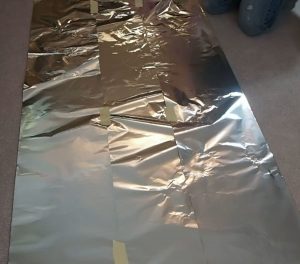
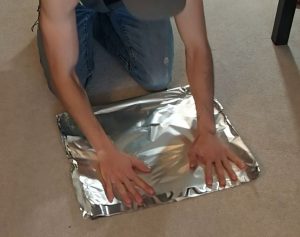
Then, find a bowl or something of similar shape to use as a mold for your snake hide. Stuff the tinfoil into the bowl!
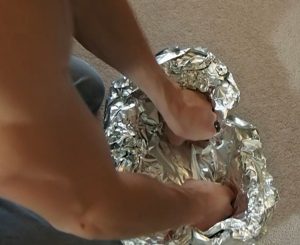
Pop the foil out of the bowl and you’ll see you hide starting to take shape. You may also cut out a door hole at this phase.
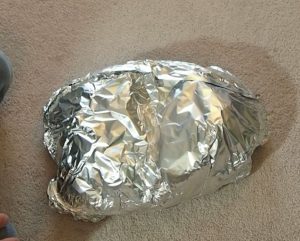
STEP TWO: MASKING TAPE
Now that we have a rough hide made from tinfoil, the next step is covering the entire hide with a layer of masking tape. Both the outside and the inside of the hide!
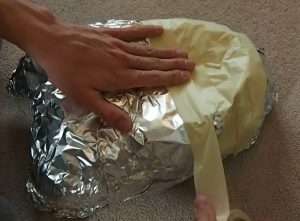
Once the entire snake hide is covered in masking tape you can use this opportunity to add shape detail to the hide. By that I mean you can make the surface of the hide look more like a rock by adding indents and angles to the surface. I found giving the hide a good “whack” with an object worked well to create realistic looking indents.
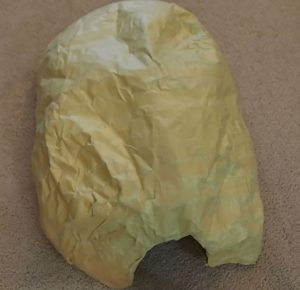
STEP THREE: PAPER MACHE
Next up, paper mache! The entire snake hide needs to have at least one layer of paper mache.
What to use:
- White Liquid Glue (thin it out with a 1:1 glue to water ratio)
- Tissue paper
- Foam Brush
Using the foam brush and glue, paint on the tissue paper in small strips over the entire surface of the snake hide (outside and inside).
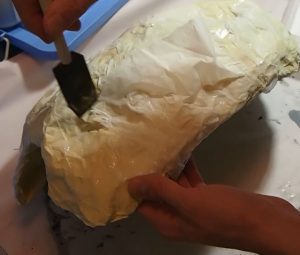
Let the paper mache completely dry before proceeding to the next step. This usually takes anywhere between 6-12 hours. Use a fan to reduce drying time.
STEP FOUR: PAPER CLAY
Last step before we paint! Go to your local craft store, or Amazon and pick up some Paper Clay. I do not recommend making your own paper clay, store-bought paper clay is non-toxic when dry (be sure to read the package)… I can’t say the same about DIY paper clay.
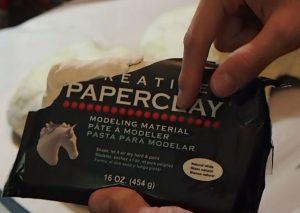
Tear off chunks of the paper clay from the brick and begin spreading it across the top surface of the hide (no need to do the inside surface).
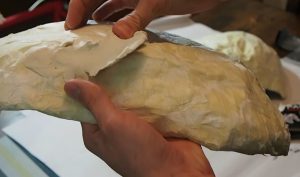
Paper clay air dries very slowly so this is your opportunity to etch in any additional details you may want to add, crevasses and cracks for example.
Once you have fully applied a layer of clay, allow it to dry and harden. This takes about 12-24 hours or 30-40 mins in the oven set at 170°F (keep an eye on it if you do this!)
STEP FIVE: PAINT!
Once your hide’s clay has hardened, you may paint it!
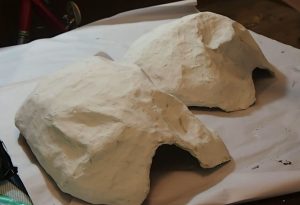
I painted my DIY snake hides in two different ways:
If you are gifted in the painting department, this is a good way to go. Painting your hide by hand gives you WAY more opportunity to be creative.
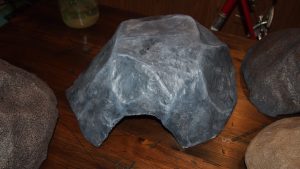
I am not the best painter to I much preferred this method (plus it was quicker).
There are many different brands of ‘stone-textured’ spray paint out there, choose any color you like!
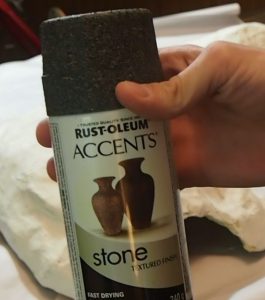
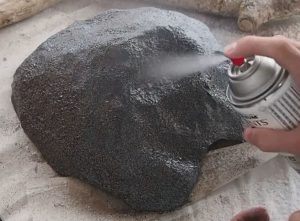
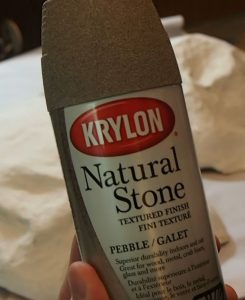
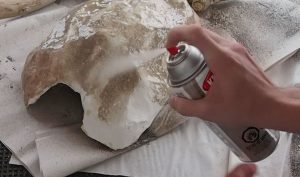
STEP SIX: SEAL & DONE!
Let your paint dry and seal it with a moisture sealer… then you are DONE!
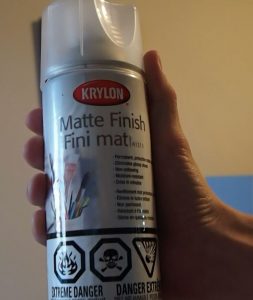
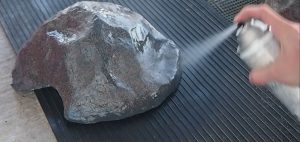
Let your snake hide air out for at least 2-3 weeks before adding it into your animal’s enclosure!
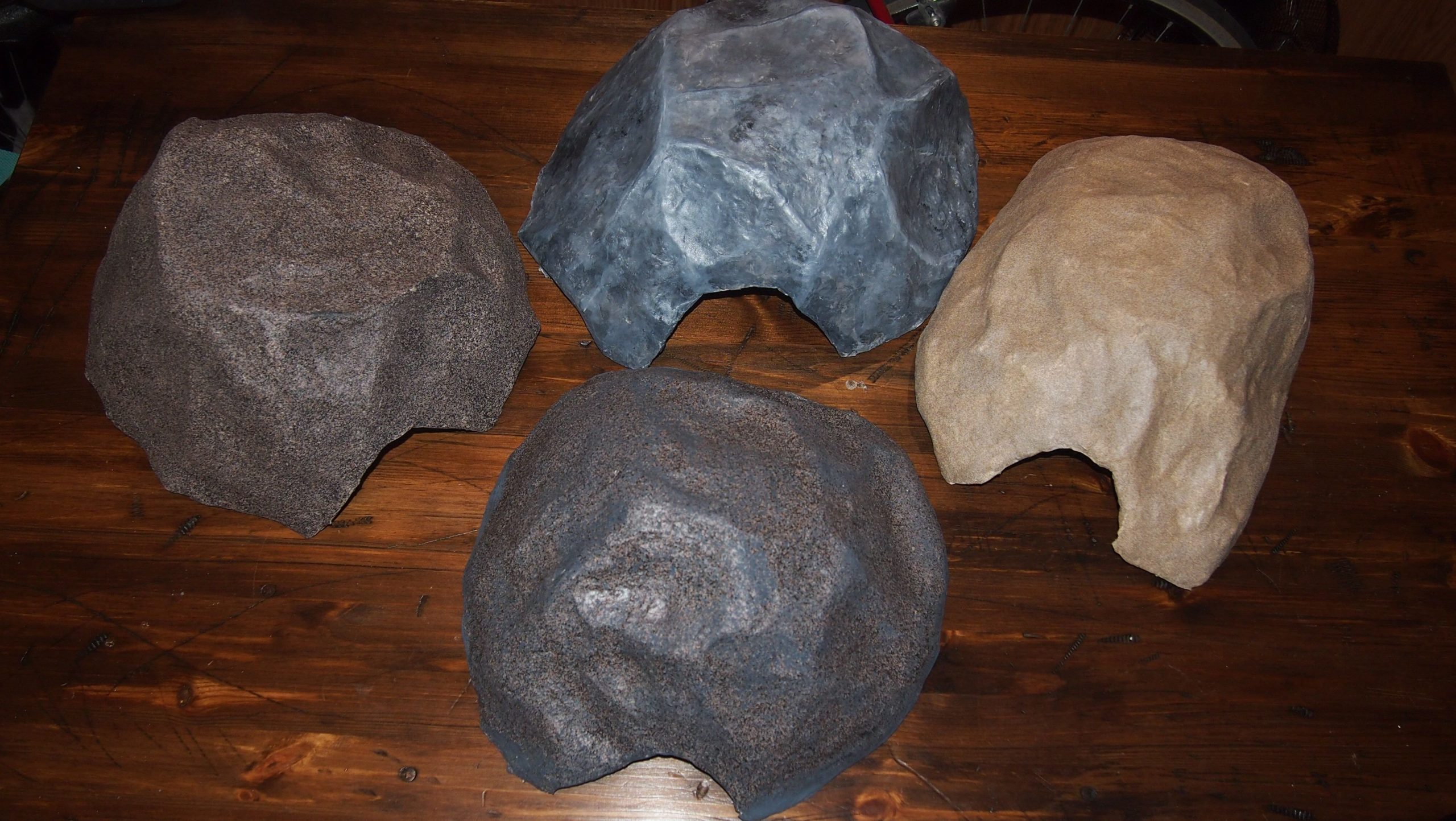
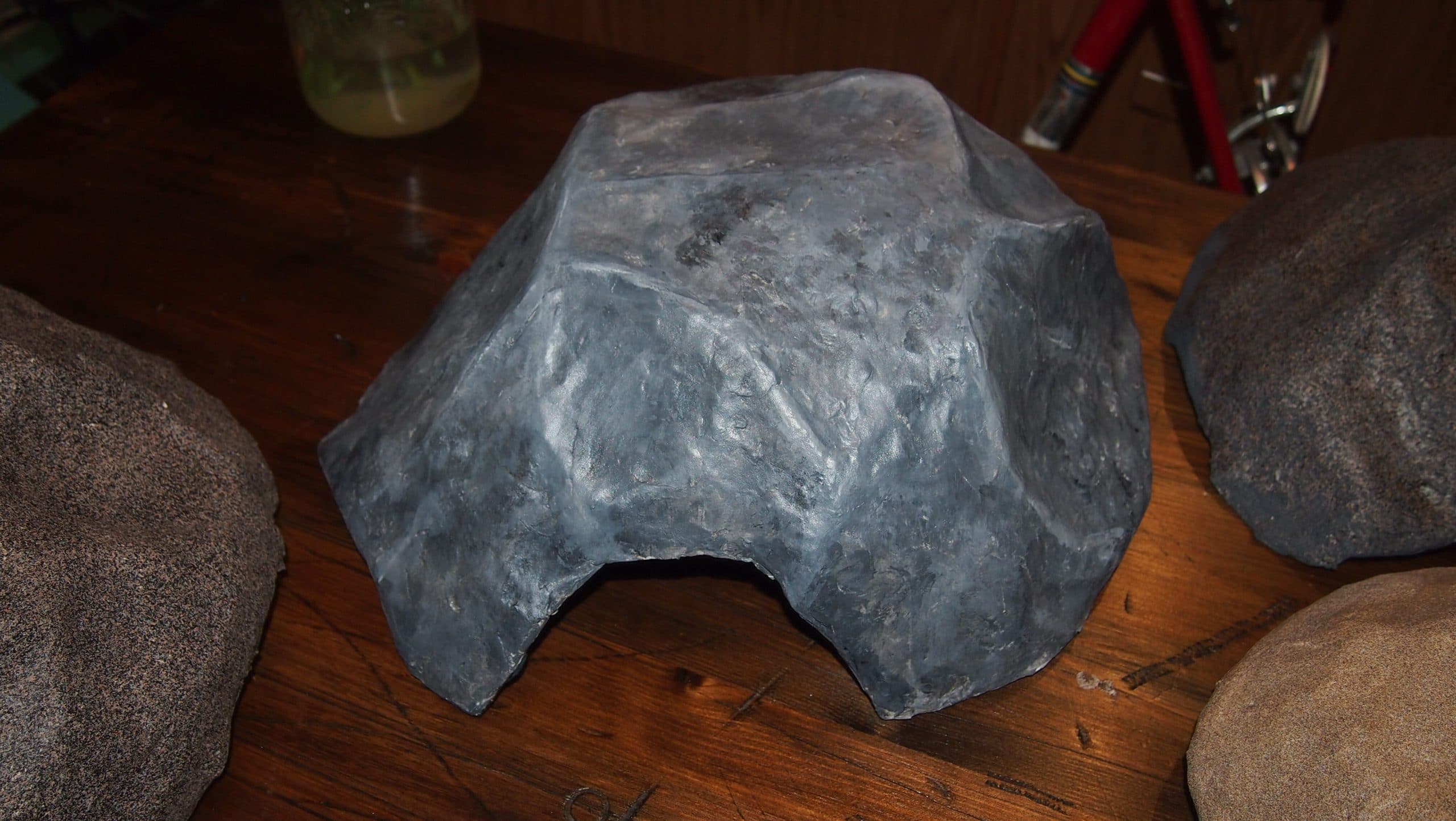
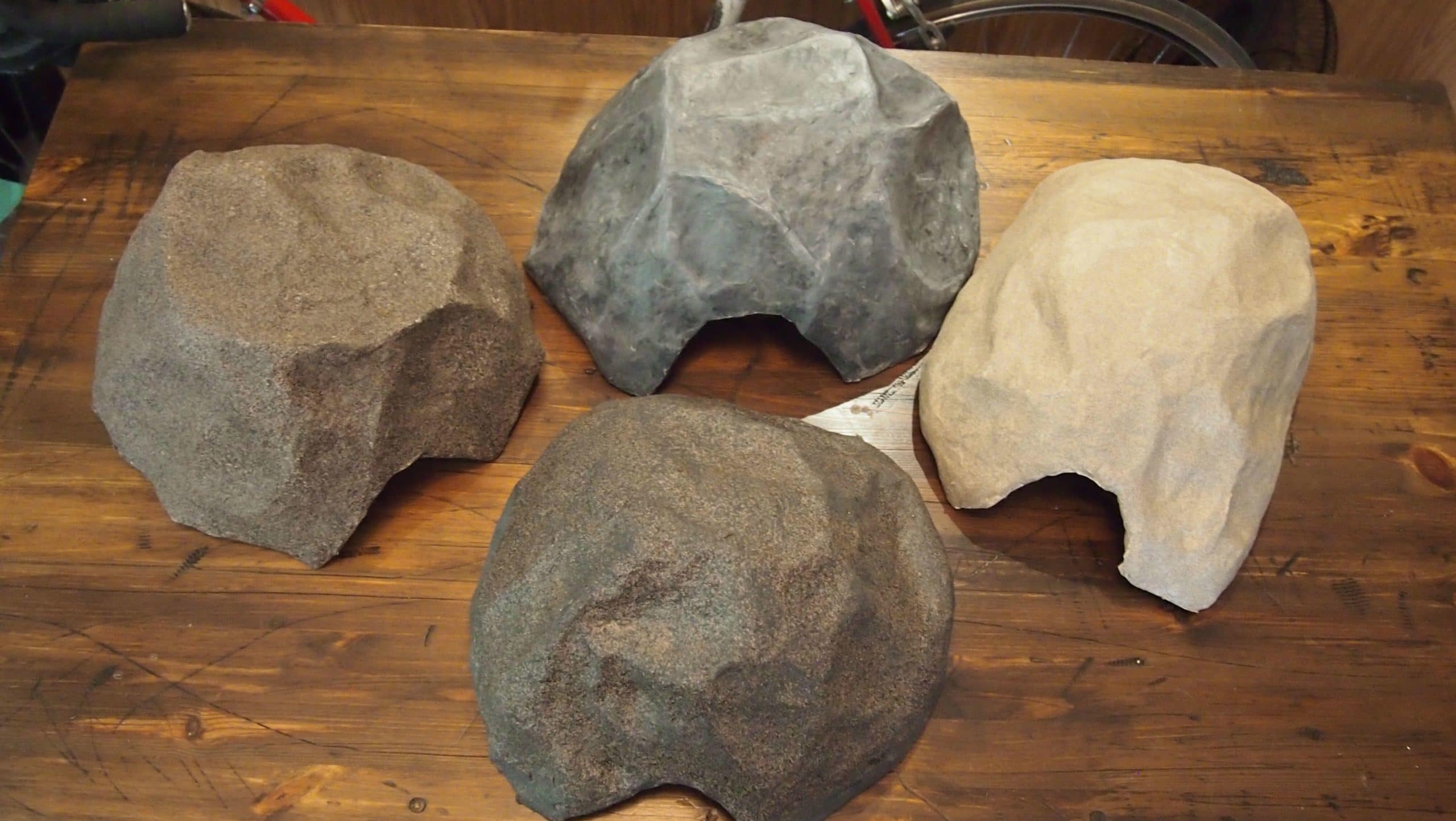
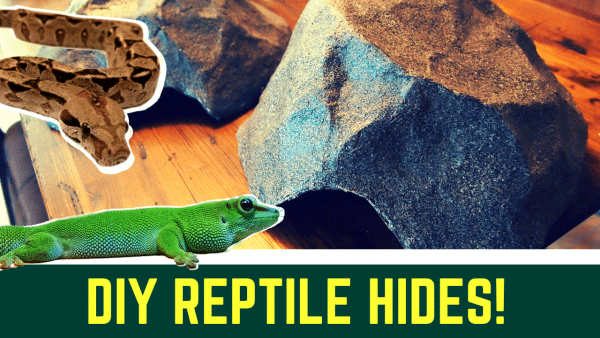
Great video/article. One question, is this safe to use under a radiant heat panel (probe set to 105 degrees)?
Thank you! Yep, I would think it will be fine under a RHP. Both of mine are under RHP’s, just give the hides plenty of time to air out!
Hi!
Now that it’s been a while, how are your hides holding up? How moisture-resistant are they, for possible use in high-humidity tanks or as moist hides?
Thanks!
So far so good! Still using them a few years later. I’m not sure they would work great for a humid hide however
That’s really great to hear, awesome! Even if only for dry hides, that’s still pretty darn good!
Thanks!
Searching I found your video & instructions and have to say, they are great. I am a craftsy kind of person, made a whole background/ledges/hide for 1 python and needed another hide for my other. This by far is the best. I use ModgePodge spray to seal, I know it’s not toxic. I’ll be using your method for my hide build. Thank you.
Awesome, glad you found it helpful! 🙂